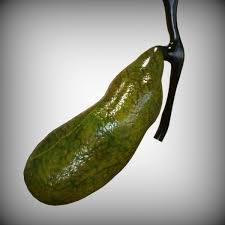gallbladder

Everything about the gallbladder and gallbladder surgery
– Gallbladder is a part of the body that as long as it does its job properly, no one notices its presence and does not care about it. Many times, it is this lack of attention to the gallbladder and its demands that expresses its discomfort with severe pains. That’s when a person’s life is disturbed and all his attention is focused on this gall bladder.
We all pay special attention to our heart, brain and even skin. Because we all know that these are the main and important organs of the body and their disease will threaten our lives. But what about other obscure body parts? For example, the gallbladder, what do you know about it?
Here we want to review the signs and symptoms of gallbladder problems and discomforts, but first, let’s get to know it better and what it does for us.
1- Gallstones
This condition refers to a condition where small stones or sometimes a large stone are formed inside the gallbladder.
In some cases, gallstones lead to severe pain in a person, but about 90% of people with gallstones do not have any symptoms.
In some cases, gallstones stay with a person for more than 10 years without causing any symptoms.
2- biliary colic
Biliary colic refers to a more serious condition in which gallstones create an obstruction in the bile duct. In this case, the gallbladder will contract strongly to remove this blockage and the person will feel severe pain. These severe contractions and pains associated with biliary colic usually last one to two hours. But since they are invasive and reversible, they stay with the person until the person thinks about treatment.
3- Gallbladder inflammation
Gallbladder inflammation can be caused by gallstones, alcohol consumption, infections, and even tumors that cause excessive bile secretion. But again, the most common cause will be gallstones. Gallbladder inflammation can last for several weeks. Fever is not common in this disease.
In 20% of cases, the inflamed gallbladder may be attacked by infectious bacteria and become infected. Sometimes it also happens that the gallbladder ruptures, in which case it is immediately removed by surgery.
Do not forget that frequent attacks of pain in this disease will make it necessary to see a doctor, especially when these pains are accompanied by fever.

Although the specific signs and symptoms of each of the mentioned diseases are different from each other, but in general there are symptoms that show a problem and abnormality in the gallbladder.
The most common symptoms and signs of gallbladder diseases are as follows:
– Severe pain in the abdomen
– Pain that hits the right shoulder and sometimes involves the back.
– Pain that worsens after eating food, especially if fatty food has been consumed.
– Pain that is sharp and crampy.
– Pain that is aggravated by a deep breath.
– Pain in the chest area
– Heartburn, indigestion and a feeling of gas in the stomach
– Feeling of fullness in the stomach
– Nausea, vomiting and fever
– Trembling
– Feeling of pain when touching the abdomen, especially in the upper right part of the abdomen
– Jaundice (skin and eyes)
– Abnormal stool color change (especially lighter and gray)
Some gallbladder problems, such as small gallstones that do not block the bile duct, usually do not cause any symptoms or discomfort.
These types of stones are usually detected by chance during X-ray imaging for another disease or surgery in the abdomen.















